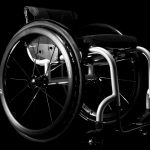In 3 previous blog items we have looked at the potential problems disabled people face when travelling by train, bus or taxi. In this article we are going to look collecting evidence to enable you to either make a complaint or start a legal action about any travel problems you encounter.
It is important to collect evidence if you decide to take legal action or make a complaint about disability travel problems. Collect evidence on the spot, make a note of the date and time, and if possible take pictures or make a video on your phone. If you missed a connection, were late for a meeting, or felt upset about how you were treated, it can be important to have noted this down, or recorded something on your phone the day it happened, so that you don’t forget. It also helps you to explain to the company, or a judge if your case goes to court, what it feels like to be discriminated against in this way.
Getting names
If you are dealing with a member of staff ask for their name. If there are people who witnessed the incident and are willing to support you in challenging this, make sure to get their contact details.
You have a right to get a copy of all information a company has on record connected to your name or your image. This includes all the records about you, your tickets, CCTV footage, and records of phone calls you made. You can use this right to help you collect evidence. If you are asking for CCTV footage of the incident, do it as soon as you can. If you leave it too late, it may no longer exist.
In your complaint letter, you can also ask the company to send you their policies, procedures, and details of the training their staff received.
Collecting evidence
- A bus journey – Write down or take a photo of the vehicle number plate as well as the bus operating company’s name and address, which will be written on the outside and sometimes inside the bus.
- A train journey – Ask for a copy of the records on Passenger Assist, CCTV footage of you and any reports from the staff.
- A taxi journey – Write down or take a picture of the vehicle number plate and the driver’s licence number. You can find the driver’s licence on a white plate on the rear of the vehicle or on the inside of the passenger compartment. The licence number normally consists of five digits. Drivers are required to display their licence badge at all times and must present the number if asked.
Thanks to the Disability Justice Project for the information for this post.
Find out more about what you can do if you have travel problems






Recent Comments